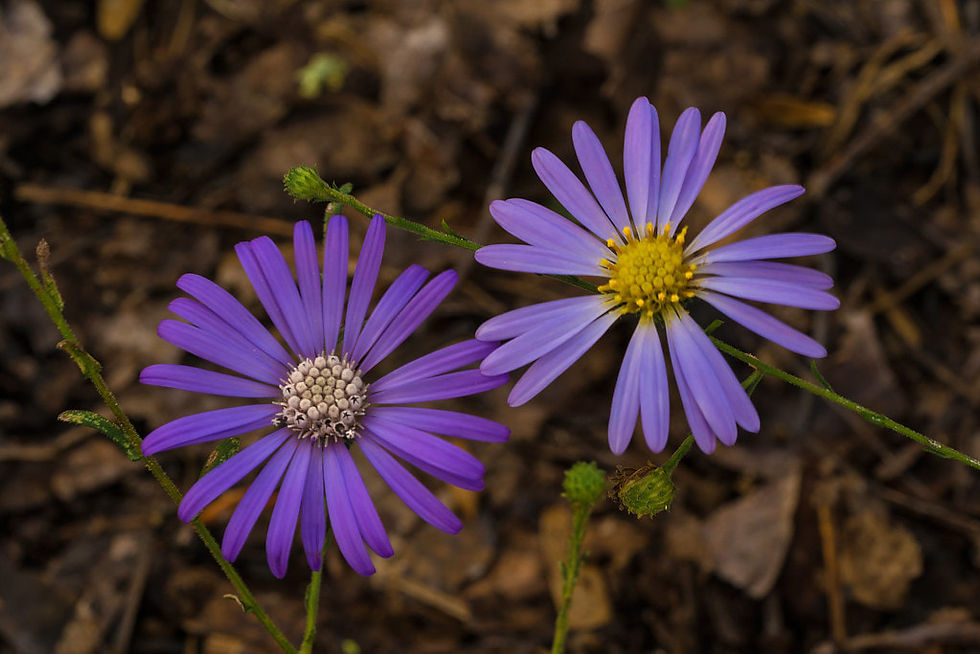My recent visit to western Oregon reinvigorated my love for asters. While aster season hasn't quite begun here in Ga, in the PNW it is in full swing. I saw them from the rocky cliffs of the coast to the inner city streets of Portland. My trips to Oregon never disappoint when it comes to seeing beautiful exceptionally vibrant flowers!
Who doesn't love blue flowers? It just goes well with so many other colors...yellow, orange, pink. Frankly speaking, I don't worry about color combinations because to me, it all looks good. But because blue is probably the rarest of all flower colors, any plant that offers it is highly treasured.
In Oregon, there probably isn't a single species or cultivar of Aster that won't grow. Sadly, here in humid zone 8 Ga, many species just don't make the cut. However, I can recommend at least 3 species for our climate.

Aster oblongifolius or aromatic aster is a stiff upright clumping aster with sky blue flowers. This aster thrives with little effort in a sunny dry spot prefering ultra well-drained soils with no additional compost, fertilizer, or irrigation. It is great for the edges of forests or other neglected places in your yard. I have, I think, 3 cultivars of this in my garden, 'Raydon's Favorite', 'October Skies', and 'Fanny', and they all seem to perform equally well for me. This, as with other asters, is the host species for caterpillars of the Silvery Checkerspot Butterfly.
Many of the North American asters have been placed in the genus Symphyotrichum, so just be aware of this.

Georgia aster (Symphyotrichum/ Aster georgianum), though rare in the wild, is finding a home in more and more gardens because of its intense blue color. Of all my asters, it is probably my favorite, though I wish there was a cultivar that was more of a clumper rather than a spreader. The selection I have is a stoloniferous (traveling) perennial. Like other asters, it does best in a dry neglected sunny location. If you want to discourage its natural "lanky" growth habit and promote bushiness, cut it back by a third in June or early July. Propagation is easy, simply carve off a side shoot and pot it up!
Our next species isn't from North America, but it is wonderfully adaptable, handsome, and nearly indestructible! Aster ageratoides 'Ezo Murasaki' has become one of my most treasured perennials and one I love sharing with others. Like the Ga aster, this plant is more of a spreader than a clumper, yet it makes a more attractive, tighter clump. Because of its vigor and spreading habit, you might want to be careful where you site it. But if it gets out of hand, it is easily pulled as its roots are shallow.

Because of my recent obsession with asters, I'm beginning to plant other species, like 'Purple Dome' and ericoides 'Pink Star'. Hopefully, these will also be good for our climate because I can't get enough of this late-season showstopper.
As with most plants I love, good luck finding these species in your local garden center. They usually have to be purchased at native plant nurseries or online.
Comments